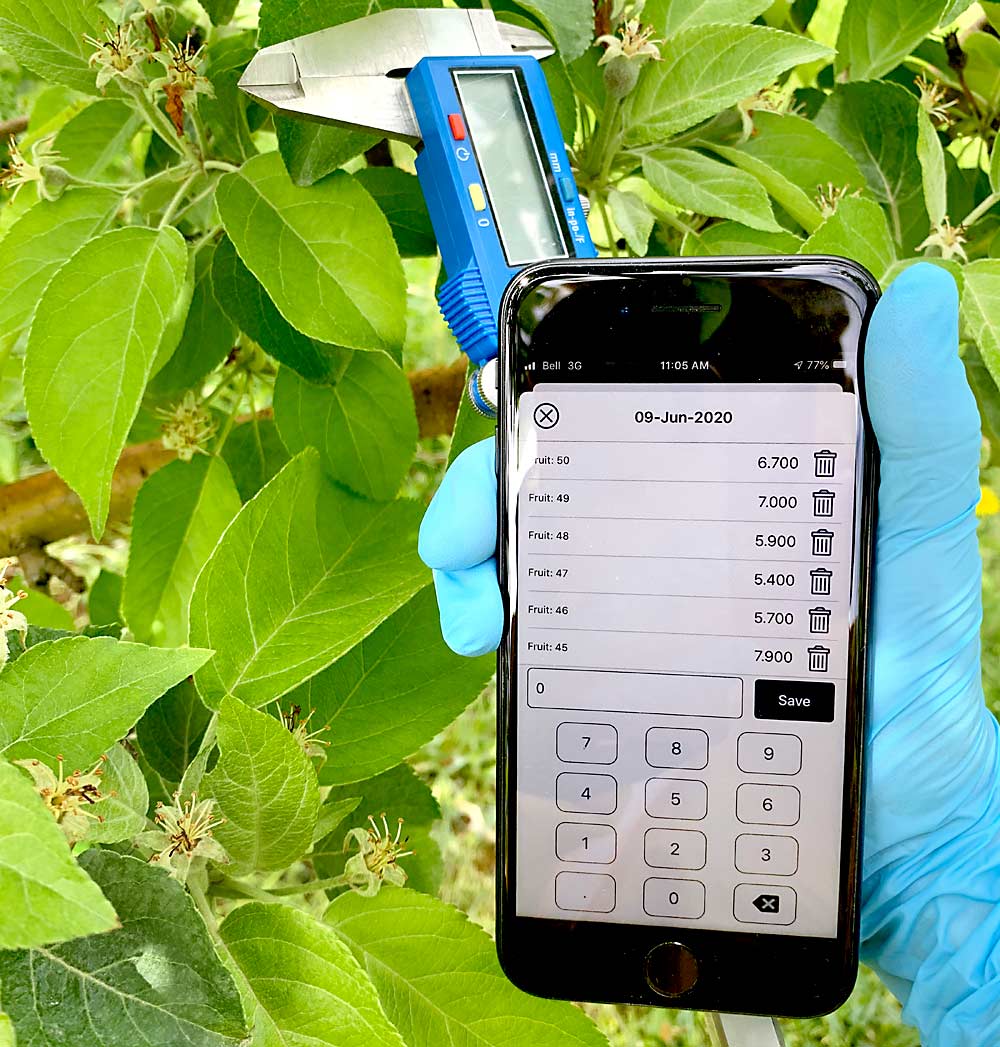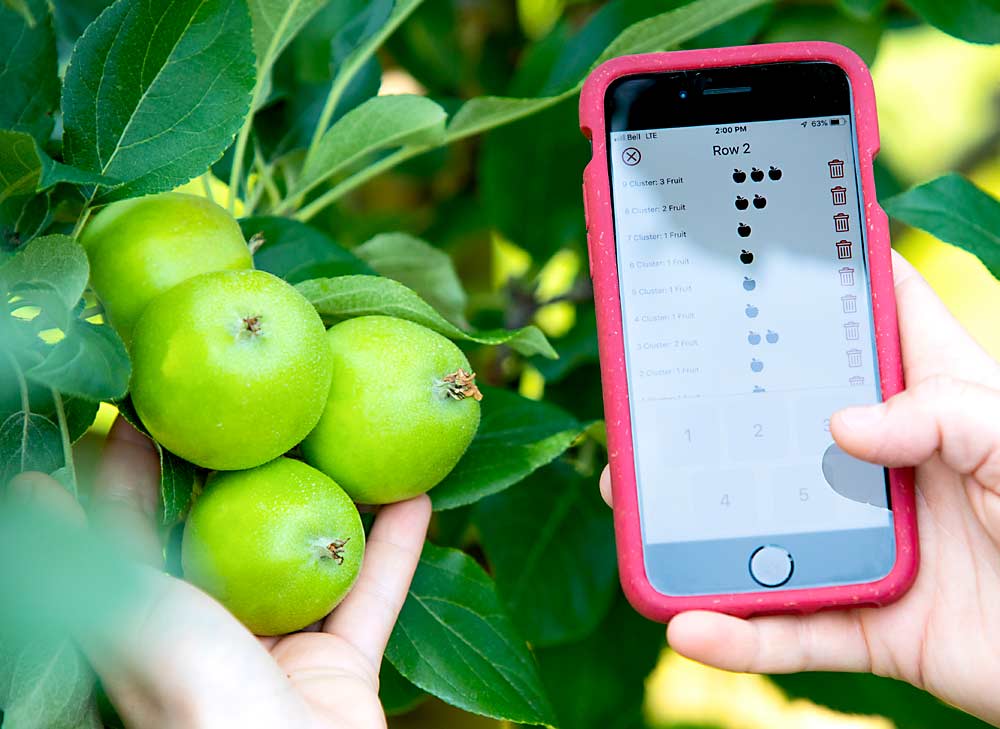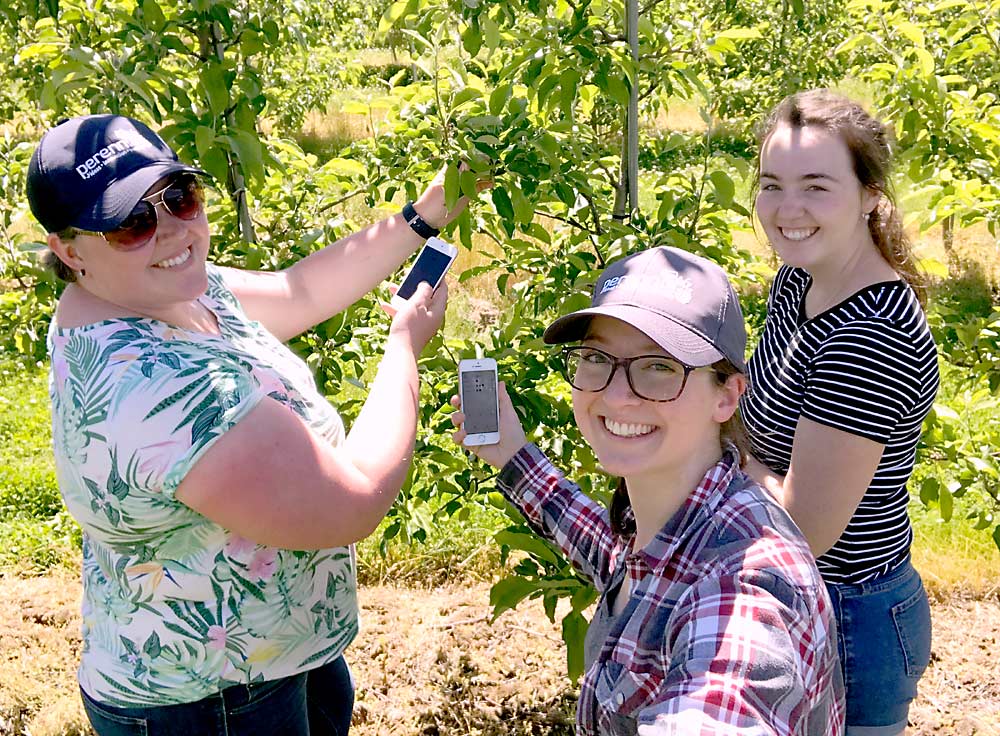
When thinning time comes around, are you tired of counting all those fruitlets, measuring their diameter and entering the data by hand? Wish the process could be simpler and quicker?
There are apps for that — with more on the way.
The Malusim app developed at Cornell University includes a carbohydrate thinning model and fruit growth rate model. Only a handful of growers are using it so far, however, and Cornell researchers have not had enough time to devote to promoting the app. Fruit extension specialist Mario Miranda Sazo said they’ll spend more time on app promotion starting this year, as part of a general push to promote modern crop load management practices.
At the University of Massachusetts Amherst, plant pathology professor Dan Cooley leads an effort to create a camera-based app that will allow growers to quickly and accurately measure fruit to inform thinning decisions.
Cooley and UMass colleagues Jon Clements and Duane Greene, as well as researchers at Carnegie Mellon University, are being aided by $1.2 million in grant funds from the U.S. Department of Agriculture’s National Institute of Food and Agriculture and the National Science Foundation.
Cooley envisions growers moving through their orchards and using their smartphone cameras to take photos of fruitlets. The app in development would use data from those photos to measure the fruitlets, then enter the measurements into a thinning model, such as Malusim, that would use the measurements and other factors to make thinning recommendations.
So far, Cooley’s team has used high-tech, expensive cameras to measure fruitlets with accuracy. This coming season, they will trial smartphone cameras — ideally with an iPhone 12. The latest Apple phone is equipped with lidar technology, which uses light to measure distance.
“A big problem we have getting good measurements is locating little fruitlets in 3D space,” Cooley said. “Lidar may help us to do that.”
Cooley said they’re probably two years from releasing a downloadable app.

Perennia, the provincial agriculture development agency in Nova Scotia, Canada, released an app called Orchard Tools last summer, available in Apple’s App Store for an annual subscription fee of $29.99.
The app’s record-keeping functions are designed to simplify the thinning process and save growers time. Tree fruit specialist Michelle Cortens described it as a handheld tool for digital data input.
The impetus behind the app was to make the chemical thinning process less tedious. The designers believed there had to be a more efficient method than one person counting fruitlets, another recording the data on a spreadsheet, then one of them entering the data in a computer back in the office. Everybody carries a smartphone now, so it made sense to create a data-entry app that could be used in the field, she said.
Orchard Tools has a list of functions users can select, and each comes with a customized keyboard. One of the functions lets users enter the diameter of each fruitlet and its position in the cluster over an unlimited number of dates, to allow for calculation of fruit growth rate, Cortens said. The app doesn’t make fruit growth rate calculations itself.
Orchard Tools includes functions for reviewing averages and graphs, to give the user immediate feedback. Because all of its functions are performed locally on the device, it doesn’t need a Wi-Fi or mobile connection to work, she said.

They developed the app to use in the orchard, so it has a few practical features: large buttons, a button sound to confirm entry, auto-saving of data and light and dark modes for different times of day. Perennia researchers field tested the app in 2019, leading to more improvements in the user experience, Cortens said.
Joseph Ferri, co-owner of T&K Ferri Orchards in Ontario, used the Orchard Tools app last year to monitor fruit growth rates.
“The app definitely saved a lot of time,” he said. “Our old method of entering the fruit sizes involved me entering the data on a paper field sheet and then re-entering the data into my Excel program. This would typically take about 20 minutes to re-enter the data for each variety.”
The Orchard Tools process, on the other hand, only took a couple of minutes. Ferri recommended users have a basic knowledge of Microsoft Excel to be able to use the exported CSV files from the app.
Ferri used the app on an iPad mini, because the larger display was easier on his eyes. He said the app was well laid out and easy to use. Most critical to him was the easy way to correct errors when inputting fruit sizes. •
—by Matt Milkovich







Leave A Comment